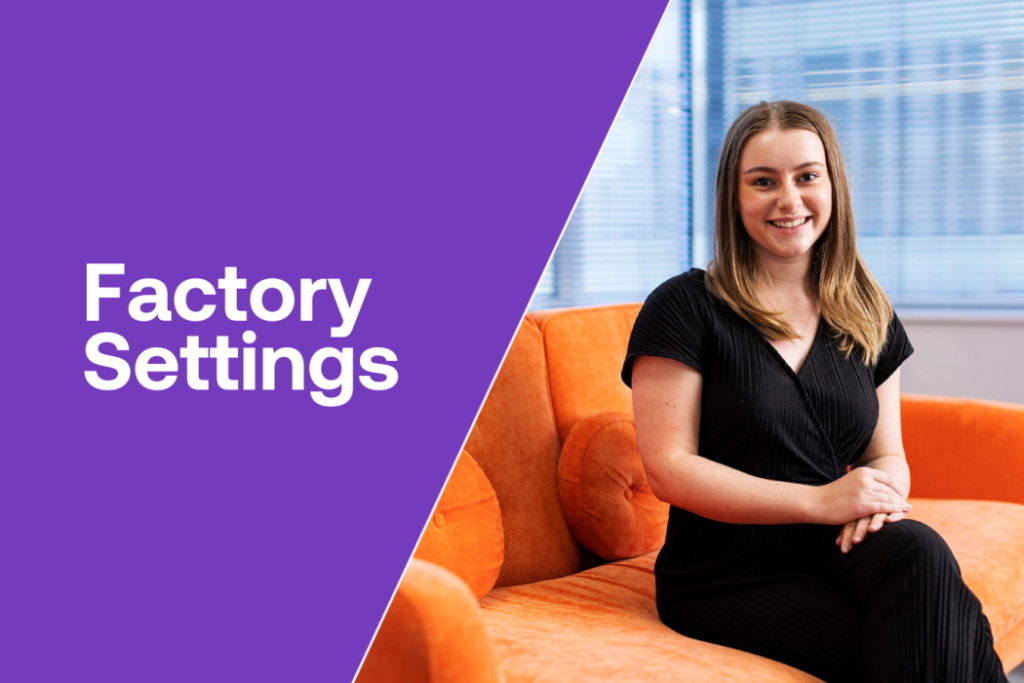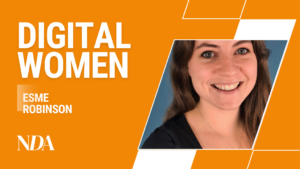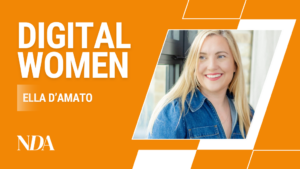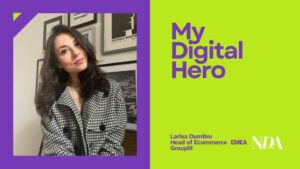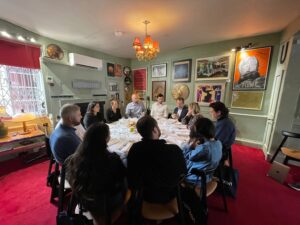By Alice Stapleton, Digital Account Manager at The Kite Factory
Welcome to Factory Settings, a content series from some of the women in digital at The Kite Factory.
This series aims to myth-bust misconceptions about the digital industry by showcasing the journey and talent of some of our fantastic women in digital. You’ll hear from women with a wide range of experiences and career paths – from Mohini Lakhani (Senior Digital Account Manager), who quickly made the switch from a career in neuroscience to Digital Marketing when she realised the lab life wasn’t for her; to Maria Tudor (Planner Buyer), who studied a masters in digital marketing and has tried her hand at PR and comms before settling on paid planning and buying.
They’ll share their perspectives on some of the most important things they have learned in their careers.
I’ll admit that before entering a career in digital marketing, I wasn’t 100% certain exactly what the job role would entail. Despite attending many career talks at university about the industry and joining insight days and internships at local agencies, I wouldn’t fully experience the skill set required to succeed in this role until I was 2-3 months into my first job.
Luckily for me, the skillset required does play to my strengths and I’ve even grown to love some of the unexpected elements of the role that I wouldn’t have seen myself excelling at. In the last instalment of Factory Settings, my colleague Maria Tudor asked me, ‘What has been your biggest surprise about working in the digital industry?’. As Maria highlighted, the digital landscape is constantly evolving, so truthfully there’s a lot of innovation and change in the field that continues to surprise me every week. However, I remember three (pleasant) surprises standing out to me when I started my digital career.
Data analytics and number crunching
One key factor that sets digital advertising campaigns apart from traditional offline media, such as TV or Print, is the level of tracking we can implement on digital campaigns, which leads to a lot of required data analysis.
Coming out of an English degree, numerical data analysis had not been a skill I’d exercised since GCSE maths. It was also not a skill I saw myself as being good at. Although I could always grasp the theories behind calculations, mental maths was not my strong suit (something that remains true to this day, my calculator is always to hand). This ultimately made me decide that I was therefore rubbish at maths and data analysis in general.
I had a preconception that data analysis in the real world was as dull as GCSE maths equations hidden in mundane contexts in tests. Because of this preconception, if I had been told how much number crunching and data analysis was involved in this job, I would have chosen a different route.
Thankfully I never found out, because a role in digital advertising has pushed me to realise that data analysis takes more than just mathematical competence to gain insight and onward action beyond the numbers. My background in literary criticism left me with the perfect skill set to relate the numbers to real life and turn the data into insights. It has allowed me to ‘read between the lines,’ if you will. For example, noticing that the clickthrough rate is lower than average for a particular audience is the first step in analysing a data set. The real value comes when you can delve into why that may be, thinking about the person behind the click and what actions could be taken to improve it.
Project management
Project management skills are required for many roles in various industries, yet it surprised me how much project management would dominate my day-to-day tasks. Seeing projects through from brief to implementation requires an immense amount of organisation. Drawing up project timelines and deadlines, corresponding with third parties and allocating responsibilities within my team are all weekly tasks I have to do that I didn’t necessarily expect to be a part of the job role.
My surprise has stemmed from the common perception that project managers are men in hard hats. To a certain extent this does ring true with 70% of the project profession being dominated by men and the construction industry being one of the top three sectors for project managers (Association For Project Management). However, the skillset required for project management is incredibly diverse and expansive so we should be seeing more diversity within the project management field.
It is conservatively estimated that just 30% of project managers are female, and yet when thinking about it most women will naturally have the right skillset for project management. For decades women have been the primary caregivers and project managers of the household, accustomed to organising the whole family’s diaries as well as their own, delegating house chores, being the main point of contact for their children’s schooling, meal planning…the list goes on.
At Glamour’s Women of the Year Awards 2015, Reese Witherspoon highlighted the common trope seen in many blockbuster films that when characters are confronted with a problem it will always be the female character to gasp ‘What are we going to do now?. Reese goes on to say, ‘Do you know any woman in any crisis situation who has absolutely no idea what to do’. Her speech has stuck with me all these years, not only because I now constantly notice this trope myself again and again in films and series but also because like Reese, I don’t know any women in my life who wouldn’t be able to tackle a crisis with logic and ingenuity.
On International Women’s Day, one of my clients Association for Project Management are harnessing the conversion about women’s rights and shining a spotlight on women in the project profession. “At a time when the project profession has never been so important, we want to celebrate the achievements of the women working in projects that have made a real difference to communities and society” – Association for Project Management. It’s great to see organisations normalise women’s presence within the profession and highlight that a career in project is accessible, achievable, and rewarding for women regardless of their career stage or previous experience.
Creative thinking
Press stunts, immersive out-of-home and viral campaigns are most likely front of mind when considering what defines creative advertising. There may be a pre-conception that digital advertising lacks creativity in comparison to other forms of media. In fact, I had a conversation with some colleagues recently about how they thought their role in digital was inherently un-creative because our strategies are often logical and data-driven.
However, to me, creativity doesn’t need to be overt to show out-of-the-box thinking. Creativity can be found woven throughout every digital advertising strategy. For example, clever phasing of campaigns, channels use, sophisticated retargeting solutions, nuanced audience targeting, and innovative targeting methods all have creative thinking at their core.
The pressure to hit targets or improve performance often excels creative thinking within digital. For years Meta has dominated digital ad spend. But with the introduction of stricter privacy policies after the release of iOS14 and the phasing out of third-party cookies, the sheer amount of data Meta holds on its audiences is dwindling. This is leading to increasing difficulties matching target CPAs and ROIs that were easy to achieve 2-3 years ago. The ever-changing digital marketing landscape pushes us to leave our comfort zones to spark innovation within the industry.
The looming demise of third-party cookies, set to be a colossal change, is undoubtedly sparking creativity and innovation in how we reach the right people. Cookie-based interest targeting and retargeting- where we can target people based on their browsing habits- has proven an incredibly effective means of reaching target audiences, meaning that we’ve become incredibly reliant on this method to deliver on targets. However, it’s estimated that at least 50% of internet users are already browsing in cookie-less environments, which reveals potential for success in cookieless environments. Due to our over-reliance on cookie-based targeting methods, many creative targeting methods are still yet to be adequately explored. I’m looking forward to seeing what creativity and innovation emerge when we’re forced to search for alternative means of driving success.
Although my plunge into the digital marketing field was perhaps a risky move, considering I didn’t have a complete understanding at the time of the industry and the job role, it allowed me to discover some hidden strengths I would have never become confident with. So, if you’re considering embarking on a new career path, of course do your research and due diligence and talk to others in the industry to ascertain whether the role is for you. But there will come a point where you need to take a leap of faith, and you may just be pleasantly surprised by what hidden strengths, opportunities and enjoyment in your career you can uncover.
In the next series, I’d like to ask my colleague Milly Brown, “What has been you biggest inspiration in the digital industry?”.




